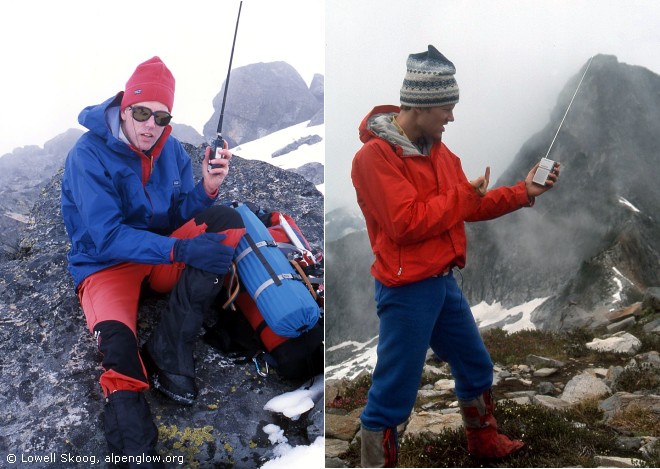Part 5 - Weather
Spring weather in the Cascades is more fickle than in any other range in
the lower-48 United States. For skiing Cascade high routes, timing is
everything, and good weather is the crux of good timing.
Weather Forecasting Made Simple
- Before any trip, you’re obviously going to look carefully at
the weather forecast, especially for a trip in which you’re
investing several days.
- Once you see a window of fair weather approaching you’re bound
to ask, “Is it really going to come? And if it does come, will it
last?”
- At this point I start looking at how the forecast is changing as the
window approaches. Is it becoming more optimistic, or is it becoming
more iffy?
- Garth Ferber of the Northwest Weather and Avalanche Center gave me
the perfect term for this, dProg/dt, the first derivative (or rate
of change) of the weather prognosis.
- Is dProg/dt positive, or is it negative? Is that fair
weather window opening wider with each new forecast, or is it
narrowing—and likely to slam in your face on day four of a six-day
trip?
- The day-to-day trend in the forecast is often more revealing than
what the forecasters are saying at any given time.
Weather Forecasting in the Field
- Once you decide to launch your trip, if you’re like me,
you’ll continue to worry about the weather while you’re out
there. Traditionally, there are several indicators you can look at to
predict changes: barometric pressure, wind direction, cloud types, and so
on.
- In college I had the privilege of taking a weather survey course
from Ed LaChapelle at the University of Washington. LaChapelle was one
of the true pioneers of avalanche work in America and the father of the
Northwest Weather and Avalanche Center.
- One day after a lecture I asked him what weather signs he would look
for in the mountains:

|
 |
|
|
- Coming from Ed LaChapelle, that was good enough for me.
- Ever since that time, if I’m doing a trip of three or more
days, I’ll bring along a weather radio. This has been quite
helpful to determine if we need to hurry at some point to avoid being
socked in, or if a change in the weather looks permanent and we might as
well bail out.
- Today you might be able to use a web-enabled cell phone for this,
but I don’t own one, so I still carry a weather radio. It’s
not perfect, but on balance I think it has been more helpful than not.
- And when the weather turns really bad, the radio serves as a target
for your frustrations. To save batteries, and make yourself feel better,
make sure to flip it off after listening (see right photo below).

|
 |
|
Left: Lowell checking the weather forecast on the Alpine Lakes
Traverse, June 2002.
Right: Lowell acting out frustration with the weather
forecast in the Southern Pickets, August 1988.
|
 |
<<Prev
|
Intro
|
Timing
|
Winter
|
Mush
|
Gliding
|
Weather
|
Glaciers
|
Next>>

|



